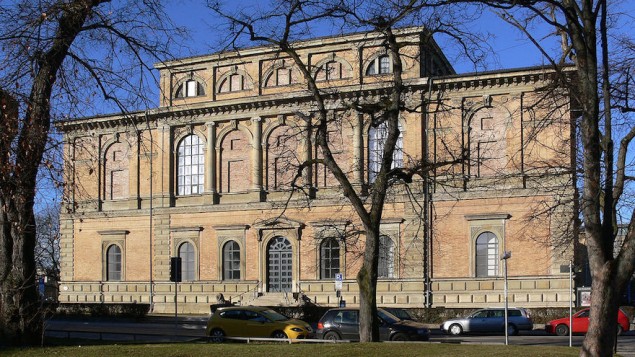News:
German museums handed Nazi-looted art to top Nazi families after war, NGO says
Restitution group: Items taken from Jews were sold cheaply to family of Göring’s widow, wife of Hitler’s district governor

The facade of the Alte Pinakothek art museum in Munich, one of the Bavarian state galleries
After World War II, German museums handed over artwork looted from Jews to the families of prominent Nazis responsible for the theft, often without demanding any proof of ownership, a British restitution group charged on Monday.
“It seems that Bavaria thought restitution meant restitution to the Nazis rather than to their victims,” a statement from the Commission for Looted Art in Europe said.
The deception began as soon as American authorities handed over the restitution task to the Bavarian administration in 1949, according to the report. Thousands of artworks were in question.
Reportedly, German authorities kept some and sold others at deflated prices, including to members of prominent Nazi families such as the widow of Hermann Göring and Henriette von Schirach (nee Hoffmann), the wife of Hitler’s district governor, or “Gauleiter,” in Vienna.

Adolf Hitler with Hermann Göring on balcony of the Chancellery, Berlin, 16 March 1938 (Bundesarchiv, Bild / Wikipedia)
“Von Schirach was condemned at Nuremberg for crimes against humanity for the deportation of 60,000 Austrian Jews,” the London-based organization said.
The group traces the story of how von Schirach came by one small painting, “Picture of a Dutch Square,” by Johannes van der Heyden that originally belonged to a Czech-Jewish couple, the consul general to Vienna, Gottlieb Kraus, and his wife, Mathilde. The Kraus family fled to the United States in April 1938, putting their possessions in storage.
But the property was later confiscated by the Gestapo and artworks were sold to, among others, the planned “Führermuseum” in Linz, Austria, and to the father of von Schirach, Heinrich Hoffmann, Hitler’s official photographer and an art collector.
After the war, the painting was among the thousands of works to be returned to rightful heirs. But the Bavarian State Galleries sold it back to von Schirach for 300 Deutschmark, and she promptly auctioned it off for 16,000 Deutschmarks to the Xanten Cathedral Association; it was on display in the cathedral until 2011.
Meanwhile, the great-grandson of the Krauses, John Graykowski, has been seeking restitution of the family’s collection in vain.
“While their [the Nazi families] demands were dealt with promptly and efficiently and with little requirement to prove their claims of ownership, the looted families had their claims thrown out or impossible hurdles created to prevent them recovering their artworks. The families are still experiencing the same barriers to recovery of their looted works of art today,” a statement from CLAE said.
In a joint probe, the Munich-based newspaper Süddeutsche Zeitung and the British NGO Commission for Looted Art in Europe also found that the Bavarian State Galleries and many other such institutions have been sitting on art that was forcibly “purchased” from Jewish collectors under the Nazi regime.
The museums have tried to disguise the origin of the artworks, and even sold some of them without seeking the rightful owners or their heirs, according to the investigation.


